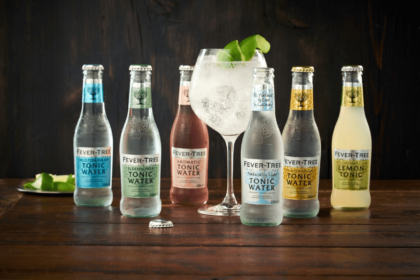Australian welfare group Animal Liberation has launched an advertising campaign to educate consumers about the inherent cruelty of the Australian duck farming industry.
The campaign, which draws attention to the plight of more than eight million ducks raised and slaughtered for meat in Australia each year under grotesque and inhumane conditions, goes live this week, and will focus on educating the Australian Asian community, which consumes a large proportion of the duck meat sold in Australia.
The advertisements will appear in both English and Chinese inside 25 buses travelling in and around Sydney’s Chinatown, outside popular Chinese restaurants (where ducks hang by their necks in the window) and in Chinese community newspapers, showing two juxtaposed images; the imagined clean, happy, white duck swimming in its natural surrounds, compared with the harsh reality of a sickly looking farmed duck, smattered with waste and living on dry grating inside a dark shed.
“These two images are worth a thousand words, revealing the startling gap between where consumers might think their duck meat comes from, and where it actually comes from,” said Emma Hurst, campaign manager for Animal Liberation. “The ad campaign is part of a broader educational strategy. We’re starting with the Australian Asian community as we want to target the biggest body of consumers and show them the horrifying reality of duck farming.”
The campaign, funded through a grant from Voiceless: The Animal Protection Institute, comes off the back of a comprehensive report compiled by Animal Liberation – “Like a Duck Out of Water – An Expose of the Australian Duck Industry”, which was presented to Australian duck meat retailers, including Woolworths and Coles, earlier this year.
“Ducks, who have been known to form very strong bonds with humans in the same way a dog might, are Australia’s forgotten farm animal,” said Hurst. “These naturally placid and intelligent aquatic birds, who rely on access to water for their health and wellbeing, are killed in the millions each year, after living for just six to seven weeks in crowded sheds filled with excrement, with little light, room to move and no access to fresh air or surface water.”
According to Hurst, water deprivation represents one of the most severe welfare concerns with modern duck farming practices, given that ducks are aquatic animals designed for a life on water.
“In Australia, there is no legal requirement for commercial duck farms to have water available for ducks to swim, bathe, or even dip their heads. But the truth is that ducks require water to clean themselves, regulate their body temperature, and to take pressure off their naturally weak leg and thigh joints. We consider the cruelty in this industry to be on par with battery cages used in egg farming.” she said.
Ducks deprived of water can suffer from lameness, dislocated joints, broken bones, splay legs, breast blisters, loss of their centre of gravity, bumblefoot, pus filled cuts and abrasions, skin damage from high ammonia concentrations, crusty eye, and the build-up of filth on feathers and high levels of stress.
“Consumers, who until now, have probably been unaware of the cruel practices responsible for bringing duck to their plates, are ultimately the ones with the power to challenge this industry,” said Hurst. “The current code of practice for poultry is up for review, so now is the perfect time to create pressure and highlight the inherent welfare issues in this industry,” she said.








